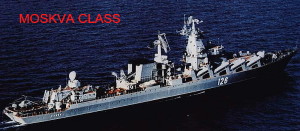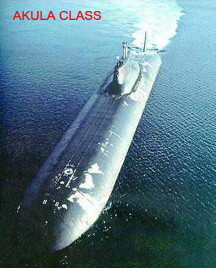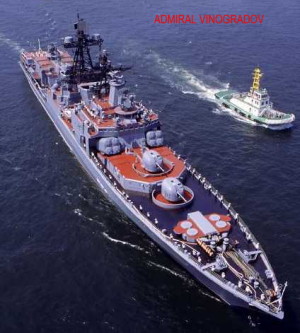INDIA DEFENCE CONSULTANTS
|
WHAT'S HOT? –– ANALYSIS OF RECENT
HAPPENINGS |
|
INDIA–RUSSIA NAVAL RELATIONS An IDC Analysis
|
|
New Delhi, 14
May 2003 India–Russia naval relations are being revived. There are many who credit the now legendary Admiral Gorshkov, often called the father of the Russian Navy, as the mentor of India's modern Navy too, for all the help that he gave us. Now another big naval exercise is about to take place and we take pleasure in expressing our thoughts. From
the Russian perspective the forthcoming Indo–Russian joint naval
exercises are of great significance. The Russian economy in recent
times had attained a certain degree of stability even recording a
decent growth. Rise in oil prices and exports and substantial
defence exports; notably to India, China and Iran have also helped.
The regional ambitions of the once formidable superpower were
certain to take priority in course of time and the desire to play an
active role in military operations and decisions making on and
around the giant Eurasian landmass and Africa appear to be apparent. The
locations of the exercises are of significance as initially the
exercises were to be held near the island of Socotra, before moving
to the Bay of Bengal for further exercises. Socotra, an Yemeni
island off the Horn of Africa on the Gulf of Aden, is a strategic
location, overlooking the seagoing traffic between the Persian Gulf
and the Red Sea, and is home to a US signals intelligence facility. From
the waters off Socotra, the Russian and Indian vessels may attempt
to monitor US Other
vessels in the Russian fleet have limited electronic warfare
capabilities as well. As a complementary measure the Indian navy
vessels involved in the exercises will test some new indigenously
developed listening devices and other EW equipment. It will be
interesting to see whether any Indian airborne ESM (Electronic
Support Measures) platform like Illyushin-38 joins the
"fray". The presence of Tupolev-22M "Backfire"
high speed MR (Maritime Reconnaissance) platforms projected to enter
Indian Naval service would have been interesting.
The
Russians are providing two or three nuclear submarines for ASW
exercises, while While
the combined Indo–Russian fleet appears formidable, geographical
"blocks" hamper the Russian Navy from playing any major
role in the Indian Ocean region, unless they secure a base in this
region to set up refit and repair facilities and stockpile
stores/spares and provisions. To approach the Indian Ocean region,
the Russian ships of the Black Sea fleet have to pass through the
NATO (North Atlantic Treaty Organisation) controlled "choke
points" like the Bosphorus Straits, as well as the narrow
stretches of the Red Sea. On the eastern side the major bases of the
Russian Pacific Fleet are encompassed by Japanese Islands except the
isolated and ice-bound submarine base of Petropavlovsk. The Kunashir
passage between Russian held Kunashir Island (part of Kuril Islands)
and the Japanese island of Hokkaido is an important route for
warships of the Russian Navy for access into Pacific Ocean. Thus
to play an active role in the Indian Ocean region the Russians may
well decide to forge extremely close links with the Indian Navy. One
can only speculate on the rest. (With inputs from Sayan Mazumdar) |
 Navy
vessels. For this purpose the Russians have chosen 'Moskva' to be
the flagship of their advancing armada. The ship was designed as a
RKR/CG (Raketny Kreyser/Cruiser, Guided missile), with sixteen
Bazalt (SS-N-12 Sandbox) anti-ship missiles mounted in four pairs on
either side of the superstructure, giving the ship a distinctive
appearance. The warships of this class were purpose designed as
flagships, with formidable communications and SIGINT (Signal
Intelligence) suite. Formidable SAM (Surface to Air Missile)
armament in the form of vertically launched Fort-Ryf (SA-N-6 Grumble
missiles) have also been provided. The integrated EW (Electronic
Warfare) and SIGINT suite is capable of real time tracking of naval
assets as well as interfering with satellite transmissions and
jamming cruise missile guidance and control signals.
Navy
vessels. For this purpose the Russians have chosen 'Moskva' to be
the flagship of their advancing armada. The ship was designed as a
RKR/CG (Raketny Kreyser/Cruiser, Guided missile), with sixteen
Bazalt (SS-N-12 Sandbox) anti-ship missiles mounted in four pairs on
either side of the superstructure, giving the ship a distinctive
appearance. The warships of this class were purpose designed as
flagships, with formidable communications and SIGINT (Signal
Intelligence) suite. Formidable SAM (Surface to Air Missile)
armament in the form of vertically launched Fort-Ryf (SA-N-6 Grumble
missiles) have also been provided. The integrated EW (Electronic
Warfare) and SIGINT suite is capable of real time tracking of naval
assets as well as interfering with satellite transmissions and
jamming cruise missile guidance and control signals. The
exercise in the Bay of Bengal may concentrate on elaborate ASW
(Anti-Submarine Warfare) tactics. With the Indian ATV (Advanced
Technology Vessel) projected to be commissioned around 2006,
invaluable expertise can be acquired from the Russians regarding the
operational support to be provided to SSBNs (Submarine, Ballistic
missile armed, Nuclear powered). This would include ASW screening
around our ATV as well as "breaking" enemy ASW barrier
forces for smooth transition of the ATV from one region to another.
The
exercise in the Bay of Bengal may concentrate on elaborate ASW
(Anti-Submarine Warfare) tactics. With the Indian ATV (Advanced
Technology Vessel) projected to be commissioned around 2006,
invaluable expertise can be acquired from the Russians regarding the
operational support to be provided to SSBNs (Submarine, Ballistic
missile armed, Nuclear powered). This would include ASW screening
around our ATV as well as "breaking" enemy ASW barrier
forces for smooth transition of the ATV from one region to another.  the formidable Indian surface ASW force is to be joined by two
Russian Udaloy class heavily armed ASW Destroyers, 'Marshall
Shaposhnikov' and 'Admiral Panteleyev'. They were initially designed
for the challenging task of hunting nuclear submarines of the United
States in the harsh meteorological conditions of the Arctic.
Interestingly 'Admiral Panteleyev' has tasted Indian hospitality
before as it had paid a visit to India during the International
Fleet Review 2001, along with its "sister ship" 'Admiral
Vinogradov'.
the formidable Indian surface ASW force is to be joined by two
Russian Udaloy class heavily armed ASW Destroyers, 'Marshall
Shaposhnikov' and 'Admiral Panteleyev'. They were initially designed
for the challenging task of hunting nuclear submarines of the United
States in the harsh meteorological conditions of the Arctic.
Interestingly 'Admiral Panteleyev' has tasted Indian hospitality
before as it had paid a visit to India during the International
Fleet Review 2001, along with its "sister ship" 'Admiral
Vinogradov'.